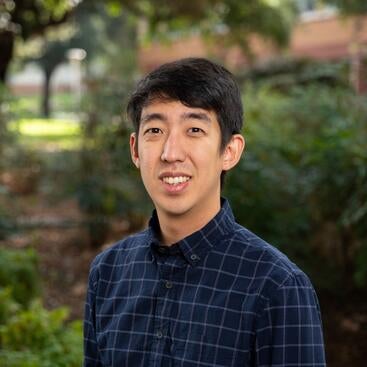Andrew Joe, an assistant professor of physics and astronomy who joined UC Riverside last year, has received a two-year Doctoral New Investigator, or DNI, grant of $110,000 from the American Chemical Society’s Petroleum Research Fund.
DNI grants offer initial funding to scientists and engineers in the United States who are in the first three years of their first academic appointment as assistant professors or in equivalent positions. These funds are intended to showcase proof of principle or concept, test a hypothesis, or demonstrate the feasibility of a proposed approach.
The title of Joe’s project is “Dynamic Control of Photogenerated Carrier Lifetimes in Two-Dimensional Semiconducting Heterostructures for Photocatalytic Applications.” He will study a semiconductor heterostructure (a stack of two separate 2D material semiconductors) that can be electrically switched between having a long lifetime and a short lifetime.
“The idea is that we can control whether we have charge separation or optical emission when photoexciting these materials, an important control knob for photocatalytic processes,” Joe said. “The research goes one step further and proposes changing the modulation at very fast time scales, on the order of nanoseconds, to control this process during the charge carrier excitation lifetime.”
According to Joe, this is a good time to study this control because of its broad applications in photocatalysis and petroleum desulfurization processes that help create cleaner fuels.
“This type of control of photocarriers can also be used for excitons, bound electron-hole pairs,” he said. “The ability to ‘store’ excitons by creating them via optical excitation and then emitting them as photons in a controllable manner is an important step towards realizing quantum information applications.”
When a semiconductor like monolayer tungsten diselenide absorbs a photon, a bound electron can be freed, leaving behind an electron vacancy, or hole. As the hole behaves like an electron with positive charge, the electron and hole can attract each other to form a bound state called an exciton.
The DNI grant will be primarily used to support students or a postdoc working on the project.
Joe received his doctorate in physics from Harvard University. His work at UCR focuses on using unique optical and optoelectronic techniques to study novel electronic and excitonic states in 2D materials. He uses these techniques to study the underlying physics behind new types of 2D material heterostructures and develop the next generation of optoelectronic quantum devices.
